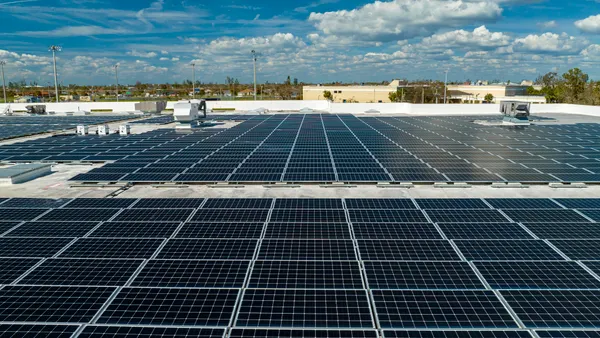In the summer, when cooling demand spikes and a utility needs to reduce load, turning down one air conditioner doesn't help much. Turning down a thousand would help, however. Which is a simple enough thing to realize, but difficult to execute, manage and monetize.
When utilities talk about aggregating resources, they split into two distinct markets: residential load, and commercial and industrial. There are differences between how the programs are structured or operated, but the principle is the same: harnessing multiple smaller commercial and industrial loads to efficiently meet demand.
"Utilities will usually go and bid separate vendors for the residential and the C&I programs," said Navigant Senior Analyst Brett Feldman. "It takes very different skills to do a mass market program compared with a C&I."
There is a lot of demand response focused on residential customers, said Feldman, while small commercial customers have been the most difficult to reach.
While smaller resources, particularly residential, would more likely be demand response, larger industrial customers might connect energy storage or generating assets which could be used. And once you have a piece of load that can be controlled, how is it utilized?
"There's aggregation for the wholesale markets, bidding in wholesale markets, and then there's aggregating resources for utilities," said Feldman. "They're the same idea, there might just be some different models you need, to go after those types of markets."
Some of the traditional, vertically-integrated utilities like Duke Energy or Southern Co., have demand response programs where customers participate without an aggregator. From a program perspective, that's an aggregation, but in that case it's direct with the utility.
In other competitive markets, like New York ISO or PJM Interconnection, distributed resources can be bid in as demand response. Pennsylvania's Act 129 set demand reduction targets, leading to aggregators like EnerNOC to search for utility business customers. California has both utility programs and aggregator-based, but the state has no capacity market, which Feldman said has been limiting for demand response.
Importantly, this is largely being bid as demand response, i.e., load reduction. The California ISO has developed rules for distributed energy resource providers (DERP) to make it easier to aggregate different types of resources in the ISO markets, including storage that would send energy from behind-the-meter back to the wholesale market. Those rules are very complicated, however, and as Utility Dive's Herman Trabish explains, have not been put into practice yet.
"For demand response, there's not a ton of technology you need — it's pretty low-tech," said Feldman. "But once you start getting into energy storage, solar, distributed generation, that's when you need a lot more in terms of communications and controls and knowledge and integration. When you start getting into those resources then the technical tie becomes more relevant."
Advanced metering is essential to connecting the utility with any behind the meter resources. On the C&I side, most larger customers already have smart meters installed. On the residential side, utilities are rapidly rolling out infrastructure programs. Data from the U.S. Energy Information Administration revealed almost 65 million AMI were installed, and 88% were residential.
Getting AMI installed is "a big enabler for demand response and being able to do measurement verification," said Feldman.
But if utilities could develop their own programs, why use an aggregator? "It's part regulations and part resources, said Feldman.
"In some places the regulators want more of an open market, they don't want it to be controlled by a utility," said Feldman. "In New York, ConEd wants to have competition to hopefully offer better services to customers and better pricing than doing it themselves."
Many utilities lack the internal resources to manage the programs.
"A lot of utilities don't have skill sets they need—it's not a core competency, so they're willing to outsource it," said Feldman. "For some utilities they outsource to a single vendor and take over the program from a turnkey standpoint, or they can allow for more competition and have more aggregators participate.
The next big frontier for distributed resources may be electric vehicles, which will mean working with both residential and commercial buildings. Few if any of the traditional demand response vendors have been operating in the EV charging space, so far it has been niche companies like ChargePoint.
Ultimately, a mix of aggregators and utility-run programs aim to bring a wide range of resources together to reduce peak load, take stress off the system in key areas, and reduce the need to purchase expensive power. And as more loads and generating resources are connected through technology and market rules, utilities are growing their Demand Response Management Systems into Distributed Energy Resource Management Systems, said Feldman.
"The utility needs a central management system with some standard communications that can talk to all sorts of endpoints, whether it's a thermostat or an EV or a storage system—that's going to be the huge part of it," he said.












